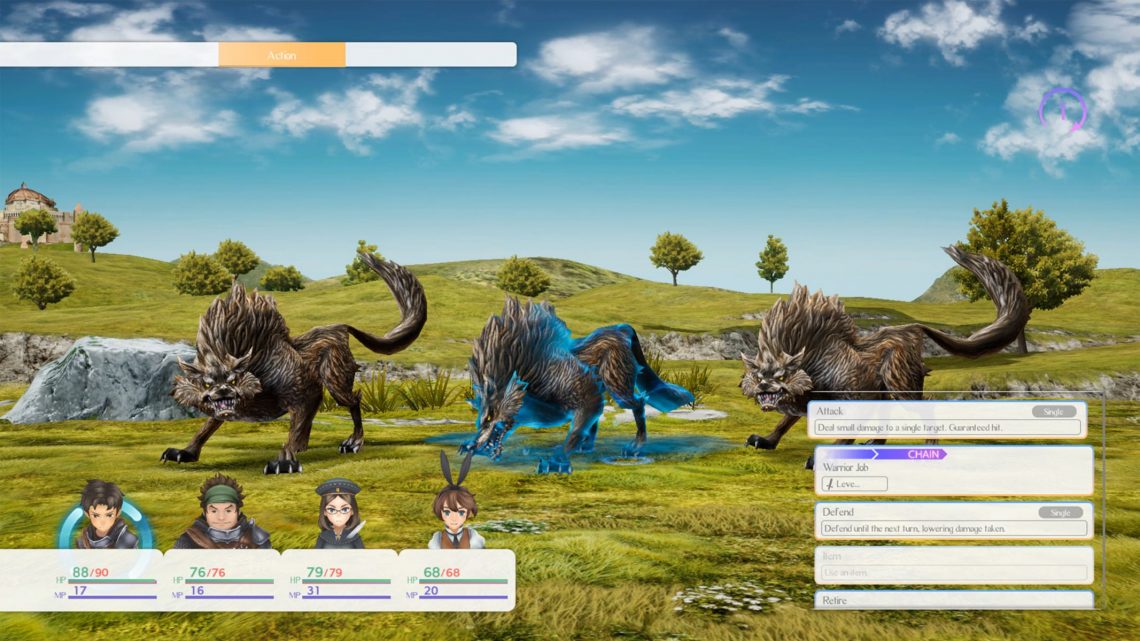
One of Apple Arcade’s Biggest Games is a Square Enix RPG That’s Real Bad
September 27, 2019One of the first options you have in Various Daylife, an incredibly high-profile game at Apple Arcade’s launch simply because it’s a new RPG from Square Enix, is “name your colonist.”
[takes a deep breath, rubs temples, and slowly begins to stare at the ceiling]
Various Daylife, which might be the oddest name Square Enix has given a game since Kingdom Hearts 358/2 Days, is explicitly about colonialism. You’re part of the “seventh wave colonists,” people brought over to a new continent to help, as the game puts it, tame the unknown. Because it’s a game from Square Enix, that means killing monsters in the beautiful countryside. Various Daylife is a story-light game, but the one it presents is an uneasy one.
The game’s celebration of undeserved territorial domination is worthy of angst, but here’s the thing: Various Daylife doesn’t seem worth much of anything. Even if you compartmentalize the fictional premise, I just do not think this is a good game! When Apple announced the pricing and initial slate of games for Apple Arcade, I was genuinely befuddled when Apple seemed to gloss over the service getting a fantasy RPG from Square Enix. It wasn’t some Final Fantasy spin-off, either. This was a whole new world!
(For a brief moment, I allowed the game’s title to suggest Square Enix was making their riff on Level 5’s Fantasy Life, an overlooked gem of a life sim dropped into a JRPG. It’s not.)
Everything about Various Daylife is baffling. Can I show you something?
This...this is how you walk in Various Daylife.
For whatever reason, Various Daylife is built like it was supposed to come out on the DS. The entire UI is split in half, with the main action—exploring, battles, cutscenes—playing out on the top half, and your various interactions with the world—choosing combat actions, sliding your finger around to start walking—happening on the bottom. It’s a strange dynamic, chosen presumably because Apple wanted, for whatever reason, the game to play vertically, and instead of finding a way to invent a UI that stretched the whole screen, it split it in half.
(It looks much more normal on an Apple TV, but I suspect most won't play it there.)
Now, imagine the same level of head-scratching applied to virtually everything else about Various Daylife, and you’re getting closer to understanding what we’re dealing with. Before writing about Various Daylife, I was genuinely curious to get a sense of what my colleagues were saying about it and, uh, couldn’t find anything. There’s not a single review of Various Daylife on Metacritic! Square Enix released a game and, somehow, no one had an opinion.
Maybe because, like me, they played five minutes and were tempted to turn it off forever.
(Really important note: All that footage seems to be from the Apple TV version. Maybe it looks like that on iPad? I wasn't able to test.)
I did gave it more time than that—but not much. So much of Various Daylife just goes completely unexplained. Entire systems go unremarked upon. The basic loop of Various Daylife is to spend time in town preparing for an expedition, where players venture further out into the world and fight generic monsters. During these quests, your party automatically marches forward and a meter fills in the corner. When it fills up, the quest is over. Along the way, every few seconds or so, a battle breaks out. Combat is tragically basic except for one semi-differentiating bit called chains, where higher levels of damage are caused by elements playing off one another. If you drench an enemy with water, follow it with lightning. Ta-da.
This is not new. JRPGs—including lots of Square Enix JRPGs—have incorporated chained elemental attacks into their combat systems for ages. Various Daylife just pretends it’s special by giving it a name, but however you dress it up, it’s nothing you haven’t seen.
And there’s just… not much there. Or anywhere, really. Characters are paper thin, hardly characters at all. The world is hopelessly generic, and so is the town you’re in. Various Daylife gives nothing to grab onto. The combat system quickly devolves into mindless tapping, while the game does the heavy lifting. Simplification isn’t unusual on mobile, and I’m not trying to begrudge Various Daylife for not having the ambition or budget of a Final Fantasy XV, but there’s nothing suggesting to you this is a Square Enix game. It’s lifeless.
If part of Apple Arcade’s pitch is spending $5 to access a bunch of great games, it also comes has this bonus: I didn’t spend any additional money to find out this sucked. Thanks?
Sarcasm aside, I can’t blame Apple for taking what Square Enix gave them, table scraps or not. Saying you have a Square Enix game is, on its face, a form of validation for Apple Arcade. Because subscription services are inherently a grabbag meant to appeal to a large group of players, and because Apple Arcade itself isn’t that expensive, the worst I can say about Various Daylife is “oops, I wasted an hour of my life.” And folks, I’m the person who will willingly rewatch the Friday the 13th series from start to finish. My time ain’t that valuable.
The grabbag is part of the appeal. When Apple Arcade launched and I watched my phone heat up as it tried to download a couple dozen games, I smiled. I’m so used to knowing exactly what games I’m looking forward to, communicated well in advance by a coordinated public relations campaign, and Apple Arcade was a mystery.
In many ways, it still is. It doesn’t have a regular release schedule. New games go up randomly. Each day, I wake up and see what’s new. Click, download, play. It’s painless. Most of them are erased from my phone soon after, but plenty others are finding a permanent spot. There’s every reason to think Apple Arcade starts promising and sputters out, and questions about how developer payments work still give me pause. And yet, games like What the Golf and Grindstone will be likely fighting for a spot on my best games of the year. That’s a good start.
Follow Patrick on Twitter. If you've got any Apple Arcade recommendations, drop an email: patrick.klepek@vice.com. He's also available privately on Signal.


